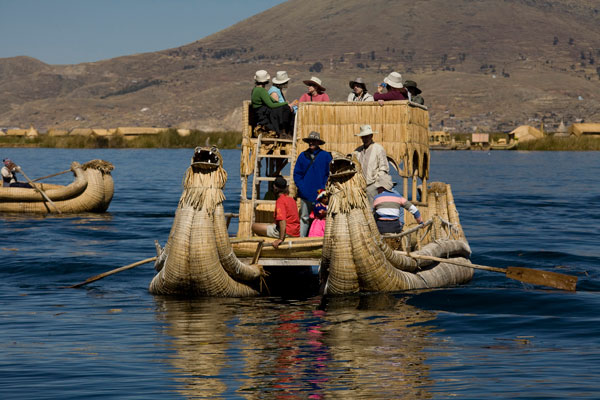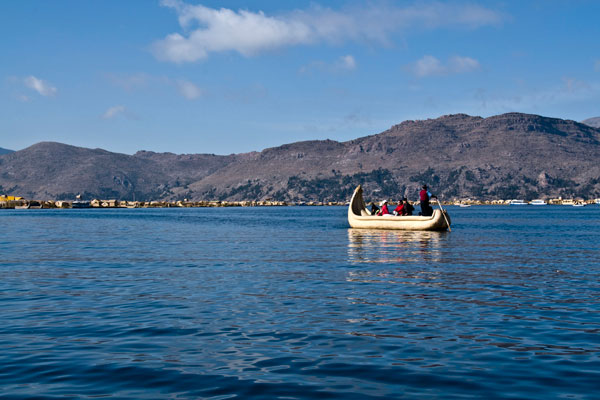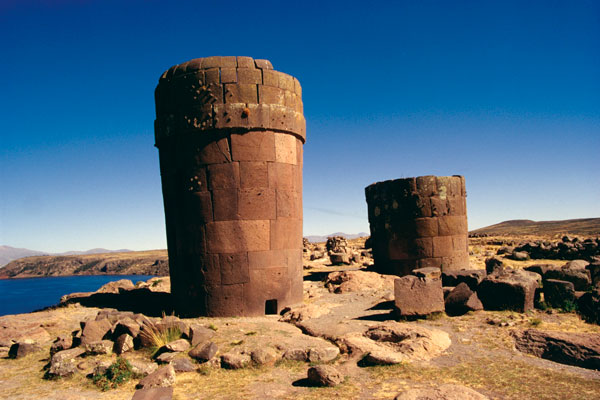
 Peru Travel, Peru Tours and Peru Hotels
Peru Travel, Peru Tours and Peru HotelsTravel to Peru, Cusco, trip to Machu Picchu, Choquequirao, Sillustani or Kuelap, Manu, Lago Titicaca and Inca Trail
About Us| Sitemap| Terms and Conditions|
 Peru Travel - Peru Hotel
Peru Travel - Peru Hotel

Passenger Comments

Querida Carolina
Fue un placer visitar su pais. No imagina lo que le agradecí su visita al Hotel, por dos veces además y sus consejos apoyados en esa magnífica documentación informática que me mostró....
José Miguel SamaniegoEspaña
more »
Three Peruvian archaeological sites -Machu Picchu (Cusco), Chan Chan (La Libertad) and Caral (Lima)- have been named among the top eight lost cities in the world, Peru's export and tourism promotion board Promperu has announced.
more »




Puno
Puno Peru

Uros Island - Puno Peru
Puno was the seat of the Tiahuanaco culture (800 to 1200 a.d.), maximum expression of the Aymara people that established themselves in what is now Peru and Bolivia; the Incas took over the territory in the 15th century and the Spanish left an important colonial legacy in the region, attracted by mining activities developed in the workplace.
Today, the city of Puno (3827 m) is the capital of Peruvian folklore and headquarters of the Virgin of Candelaria festivity and rests on the shores of Titicaca Lake, the highest navigable lake in the world. The surroundings are spectacular highlighting the Chullpas of Sillustani, with its set of imposing funeral towers built by the Kolla; Juli, famous for its beautiful colonial temples. Lampa, with its colonial church built between 1675 and 1685; Llachón community that still retains centuries-old customs and cultural manifestations and Pucara, famous for its pottery Pre Inca and the 'Pucará bulls' which today craftsmen made with clay.

Candelaria - Puno Peru
The Lake is also home to various islands, whose inhabitants have preserved ancestral customs and traditions. An example of this are the Uros, living in 'floating islands' manufactured artificially with reeds and transiting the area in their traditional boats also made of reeds. Taquile, Amantani Suasi are known for the friendliness of its inhabitants and its ancient weaving techniques, its Pre-Columbian constructions and wonderful landscapes. The Titicaca national reserve (36,180 has) protects vast Cattail and various species of flora and fauna.
Puno Location
The region Puno is located in the South Eastern part of the country.
Puno (San Carlos de Puno, 4 November 1668) is a town in the southeast of
Peru capital of the Department of Puno, province and district of the same name, is located between the geographical coordinates 15 ° 50’15’’ latitude South and 70 ° 01’18’’ longitude West of Greenwich Meridian.
Puno Surface
The region Puno has 71 999 Km².
Puno Altitude
Th city of Puno is located at 3,827 m altitude and has different ecological floors because it presents a minimum altitude of 820 m in Lanlacuni Bass and a maximum altitude of 4725 m in Esquilache .
Puno Population
According to the 2005 census has projected 1′313,571 inhabitants.






